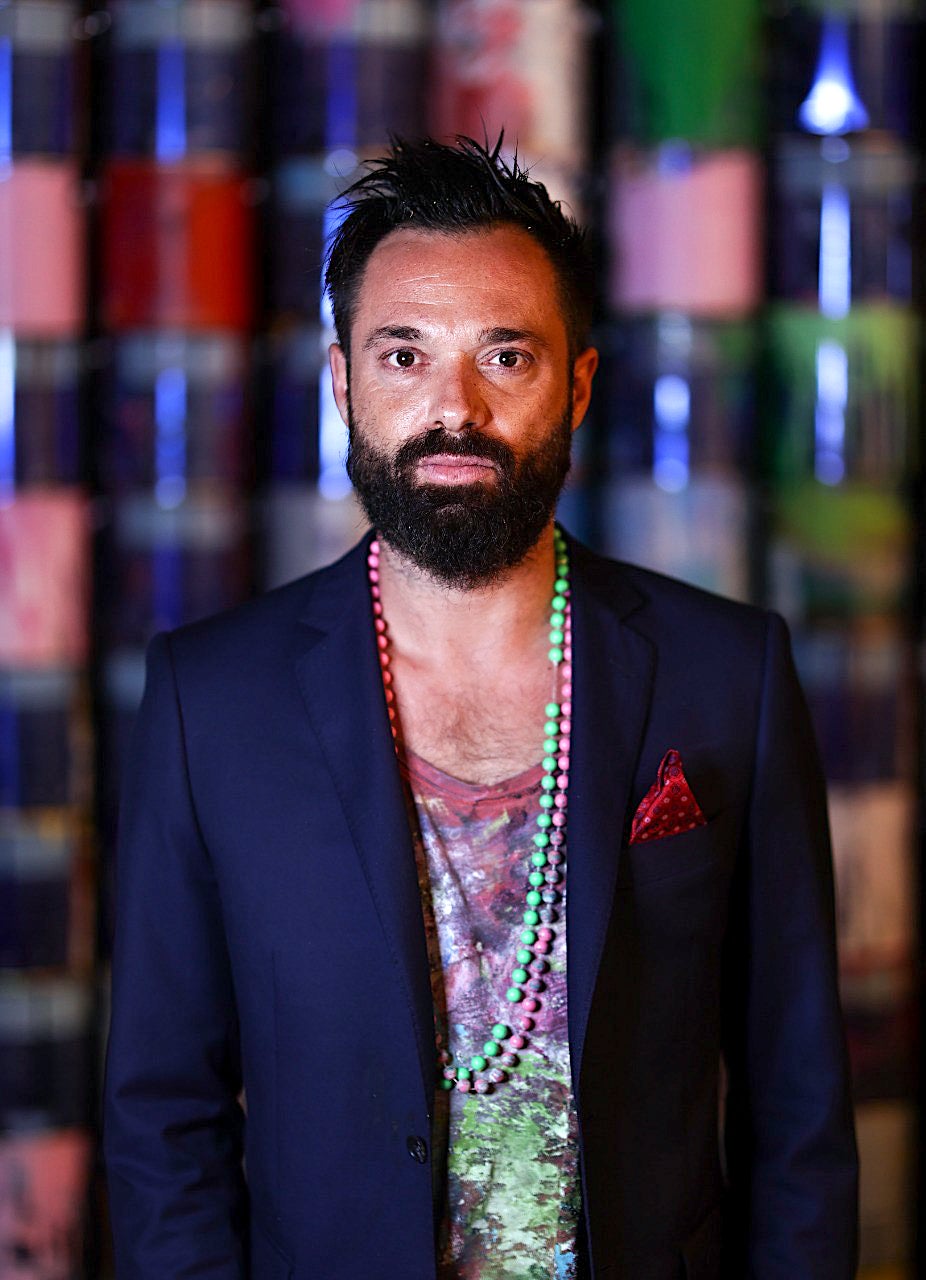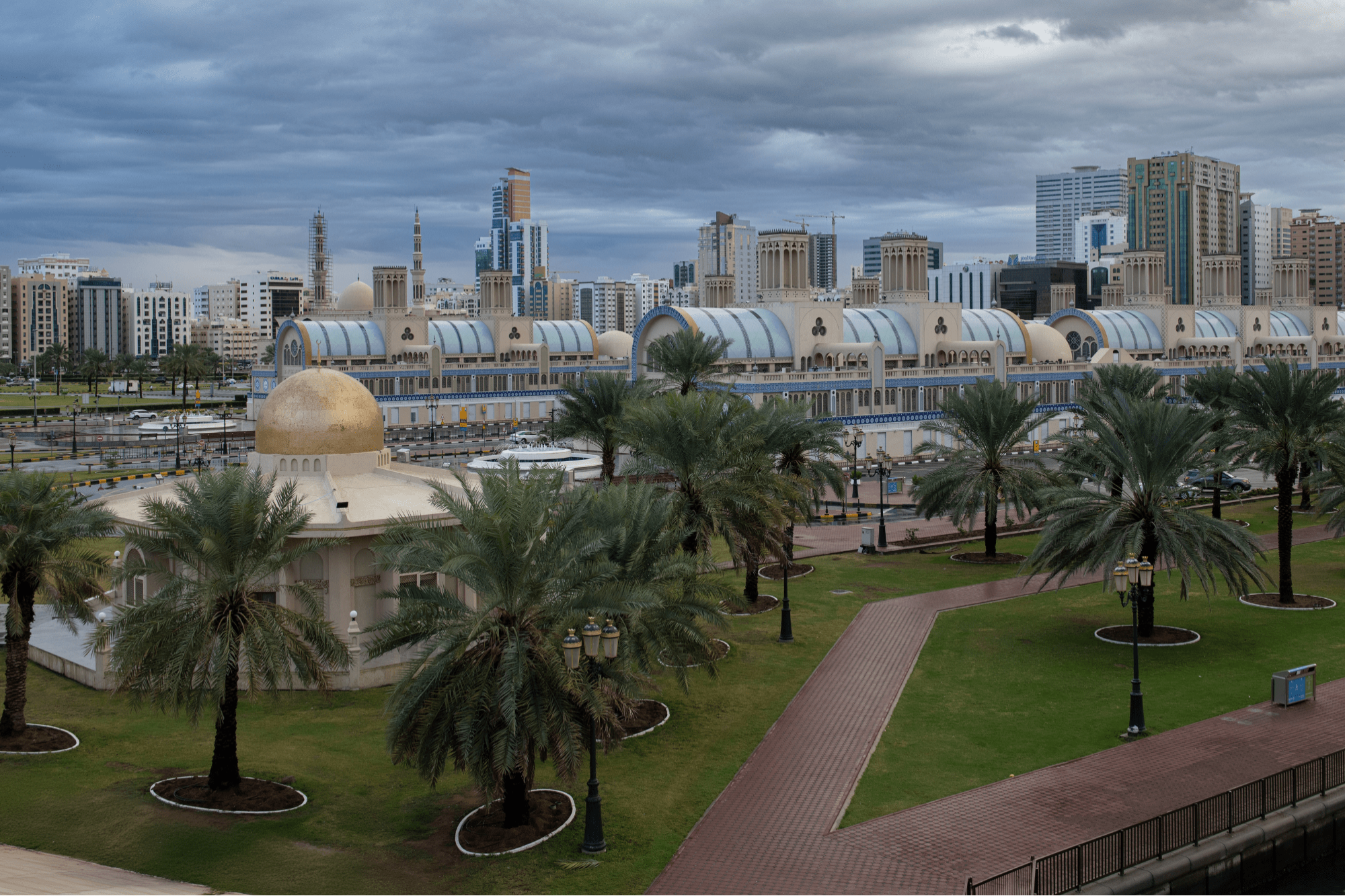Inside The Artist's Mind: Sacha Jafri On Making Art, Building Something Meaningful, And, Yes, NFTs The Dubai-based contemporary artist shares what it takes to be successful in today's art world, about the rise in interest in the nascent non-fungible token space, and how artists and entrepreneurs should surf this wave without being knocked back.
By Tamara Pupic Edited by Aby Sam Thomas
You're reading Entrepreneur Middle East, an international franchise of Entrepreneur Media.

When asked to describe his creative process, this is how Dubai-based contemporary artist Sacha Jafri put it: "Artists channel something from above that is greater than ourselves; we surrender, we borrow a moment, something magical happens, and we give it back with grace and gratitude. Only then, it will keep coming back, and it will stop coming as soon as we think that we did it and thus engage the ego, as soon as we forget that we have merely borrowed a moment."
There are many reasons to explain why you're reading about Jafri on the pages of Entrepreneur Middle East- at the bare minimum, his out-of-the-box thinking, his courage to take on gigantic projects, and his work for a higher cause than himself are all traits that would serve anyone in the entrepreneurial domain quite well too. For that reason, we talked with Jafri about what it takes to be successful in today's art world, and about the rise in interest in the nascent non-fungible token (NFT) space, and how artists and entrepreneurs should surf this wave without being knocked back. "We communicate at our most poignant through energy, which is made of our intentions, and if our intentions become suspect, agenda-filled, and financially-obsessed, then we omit static, as energy can't communicate effectively through static," Jafri says. "That's when the breakdown of humanity's more poignant connection begins, and for an artist, that's a disaster."
 Sacha Jafri and "The Art Maze". Source: Sacha Jafri
Sacha Jafri and "The Art Maze". Source: Sacha Jafri
Such concerns explain why Jafri urges caution if one decides to wade into the NFT market as it stands today. "The problem with this NFT space at the moment is that it's full of a lot of noise, noise creates static, and as an artist, you get approached by all these 24-year-olds who are just looking for a little bit of quick money, exactly because this whole space is brand new," Jafri explains. "Yes, you can make a little bit of quick money, but you are not actually building anything meaningful. You end up becoming very hollow as a creator, because you are not feeding what you need to be feeding, which is that connection to the soul of the earth."
An Eton College and Oxford University graduate, Jafri was 22 when he put to rest his dreams of becoming a cricketer and committed to his art full time. In 2004, he worked on American actor and filmmaker George Clooney's humanitarian project and documentary, Sand and Sorrow, filmed in Darfur, Sudan, which led him to visit 42 refugee camps, and this five-year journey has had him work at the intersection of art-making and charity ever since. Jafri's official biography states that he has raised more than US$140 million for charity, and that his clients list includes the royal families of UAE, KSA, UK, Brunei, India, Monaco, Spain, Nepal, Bahrain, Qatar, Kuwait, as well as international celebrities like Bill Gates, Leonardo DiCaprio, Sir Richard Branson, Sir Paul McCartney, Oprah Winfrey, David Beckham, Eva Longoria, Virat Kohli, Huda Kattan, and many more.
Today, besides acting as a long-time ambassador for the Global Gift Foundation, the 45-year-old Jafri's work has been auctioned to benefit entities like The Start Foundation, The Elton John Foundation, Art & Hope, The Eva Longoria Foundation, Al Noor's Children with Special Needs, The Al Madad Foundation, Sawtouna, and many more. Other interesting details about Jafri include that he has rarely cooperated with galleries (although today he does work with New York and Dubai-based Leila Heller Gallery), as he insists on a greater control over who buys his work by meeting the buyers, and even visiting their houses to see his work on their walls.

 Sacha Jafri on the Burj Al Arab Jumeirah Helipad. Source: Sacha Jafri
Sacha Jafri on the Burj Al Arab Jumeirah Helipad. Source: Sacha Jafri
Taking a position that is often contrarian to the traditional art world has worked very well for Jafri- last year, his 17,000-square-foot painting, The Journey of Humanity, was sold for $62 million, which is the second highest ever auction price achieved for a painting by a living artist. He spent 11 months of 2020 in the ballroom of Dubai's Atlantis The Palm, reportedly using 1,065 paintbrushes and 6,300 liters of paint to create The Journey of Humanity, which also gained him a Guinness World Record for working on the largest art canvas in the world. Perhaps more importantly, all proceeds from the sale's profit were directed to the benefit of Dubai Cares, UNICEF, UNESCO and the Global Gift Foundation to help disadvantaged children amid the coronavirus pandemic.
My conversation with Jafri happens over Zoom in April, a few weeks after I attended the unveiling of The Art Maze, the first art exhibition held in a custom-built steel labyrinth on the helipad of Dubai's Burj Al Arab hotel. Jafri's collection of 50 paintings, which aim to reconnect humanity through the 50 most poignant heritage sites of our world, was created in celebration of UNESCO World Heritage Sites's 50th year. When talking about this project, I remember that Jafri was quoted as saying that "in a world where the metaverse is becoming more of a reality, The Art Maze project is about reconnecting humanity to the beauty that surrounds us." His statement makes me suspect that Jafri might have been hesitant to jump on the NFT bandwagon, and he confirms this soon enough. "Yes, I was hesitant to enter the NFT space, because the space is brand new," he says. "It's like the birth of the internet, and when the internet was born, it exploded, but it was a slightly inflated and manipulated market, and we are exactly the same with the NFT space now."
Jafri goes to on to say that he considers the current NFT space a pyramid scheme that is unsustainable and will most probably be deemed illegal in most markets soon. "People mask it by calling it a decentralized autonomous organization, or a fractionalized asset, or they give it all these names to hide the fact that all of it is just a pyramid scheme," Jafri says. "You offer it very cheap at the beginning to a few people to get it going, then those people can flip it and sell it for a bit more, and then those people can flip it and sell it for a bit more, and by the time you get up there, the value is not sustainable, and since it's not worth that much money, the whole thing crumbles, because you haven't actually created a real market, but manipulated a market. That means that the whole thing will crumble, because it's not sustaining the value, and there are a lot of loose promises, but when it comes to the reality, 10% of that is delivered."
 The Art Maze exhibition in the Burj Al Arab - Dubai. Source: Sacha Jafri
The Art Maze exhibition in the Burj Al Arab - Dubai. Source: Sacha Jafri
In fact, Jafri expects that the current hype around NFTs will collapse in about 1.5 to 2 years' time. "I would say that 90-95% of NFT assets, which don't have a physical asset or meaningful utility attached to it on the blockchain through the smart contract, or any real value beyond a jpeg, will be worth zero," he says. "It is because no one is going to want to own a JPEG digital image of a monkey with no real market value." Having said that, Jafri has taken the time to look into the actual structure of NFTs, and found that it can serve as a base for a real market to evolve "exactly in the same way as it happened with the internet, and that real market will be worth 10x the market at the moment."
He adds, "The way to do that is not to talk about community-building, and access to this or that, and the things in the metaverse that you never deliver, because that's tiny compared to what can be achieved. What can be achieved is that you can create NFTs, attach physical assets to them, or real utilities that gain in value, because today an NFT is just a title deed, that's all that it is. It's a title deed that cuts out the middleman, validates and authenticates the asset, and connects it to the blockchain through a smart contract. And then, the value of that NFT and the physical asset behind it will grow over time, and bring returns to investors. That's a real market."
And that is why, to bring a bit of certainty into the space that is so unclear at the moment, Jafri has decided to not create a one-off NFT project, but a journey of six projects that will be delivered over the next two years. "The intention has to be there- it has to be planned and laid out over two years with a real vision, and then it has to be implemented in a way that every single project succeeds, that there's no rug pulling, and that it brings 5x the value that the investor or collector puts in," he explains. "Then, you are creating a real ecosystem, which is not full of loose promises of community, because, at the end of the day, the value of community is much lower than people are pretending it to be. Instead, you need to link this to governments, non-government organizations, and real charitable and sustainable causes, and to make sure that money goes from A to B, without 90% of it being lost along the way. Then, you can make real change. From there, a community will be built, but as a by-product of what you are creating. That's a better way of doing it; otherwise, you are creating a community of 1000-2000 people that doesn't mean anything. But, if you create a community of a billion people, that means something, that creates power and sustainable change."
 Global Artist Sacha Jafri. Source: Sacha Jafri
Global Artist Sacha Jafri. Source: Sacha Jafri
The first project in the series is called The Power of the Reconnected World, a collection of 1,000 high-value NFTs selling at $250,000, with the proceeds going to the Global Gift Foundation. "I have created a painting based on the five elements of our world -earth, wind, water, fire, and humanity because I don't call the fifth element "air,' because I believe that air is the essence of life, it's not an element," Jafri explains. "I cut it up, and I created NFTs from that, and we hope to raise $100 million from that project that will go to the Global Gift Foundation, and help support 20 charities around the world within the four pillars- health, education, sustainability, and equality. Any charitable concern will fit into one of those four pillars. That's the power of the reconnected world."
Related: Strategizing Impact: Dr. Danny Ramadan, Investment Director, Qatar Science & Technology Park
His second NFT project was created out of his original oil on canvas painting On the Wings of an Angel, which was sold for just over $1 million at amFAR's annual Cannes Gala in 2021. The NFT series sold for a record breaking $2.5 million in only 45 seconds, becoming the fastest ever selling open-edition NFT. All auction funds for this painting were donated to amFAR's AIDS and COVID-19 research projects. "From that project, I created the 99 Angels NFT collection, where each angel represents a charity, and 100% of the profits achieved from each of those angels will go to those charities, just like that first one which was sold at amFAR," Jafri explains. "The Power of the Reconnected World will launch in the next couple of months, that will give you access to the 99 Angels, and my further projects lined up to follow that, with a full schedule of creations and "drops' laid out for the next 18 months, each connected to the other and each adding value to the investor."
The next project will be placing the first official NASA-certified physical artwork on the surface of the moon by NASA's Commercial Lunar Payload Services (CLPS), in partnership with Spacebit, Selenian, Astrobotic, and Jeff Bezos's Blue Origin. The landing site of Jafri's artwork We Rise Together – with the Light of the Moon will be marked as a world heritage site landmark to last eternally on our lunar surface. "There will be an NFT series created out of that, which we hope will raise in an excess of $1 billion, and again, you'll get access to this project only if you have taken part in the 99 Angels project, because the idea is that in this way we are really building loyalty and a proper community who believe in investing in something that is worthwhile and that is helping our world," Jafri explains.
 'The First Official Artwork on the Moon' Lunar Landing Plate. Source: Sacha Jafri
'The First Official Artwork on the Moon' Lunar Landing Plate. Source: Sacha Jafri
Jafri describes his fourth project in this series as the biggest one, as it will see him cooperating with Pak, an anonymous digital artist who is ranked among the highest-grossing artist in the world of NFTs. "We are very different- he's an algorithm digital creator, he's obsessed with technology and how you can create new things within the space, whereas I am very much about expression, passion, organic movement of paint with a release of intention, love, empathy, emotion, and beauty of the paint pushing against the canvas," Jafri says. "Together, we are creating a series of 10,000 NFTs, which will create ownership for about 150 million people in both a physical and virtual space within our world, and beyond into the metaverse."
Now, I am choosing to leave details of the two projects remaining in this series for a future article (stay tuned to @sachajafri on Instagram if you're curious), and instead, I'd like to share Jafri's response when asked about what he finds most fascinating about the NFT space. "The beautiful thing is that it has changed the charitable model completely, because I can create one painting and sell it for $10 million, and that's the end of it, but now I can create one painting, fractionalize into one billion tokens, sell each token at $1, and therefore raise $1 billion from that one creation. That changes the entire structure," Jafri responds. "If I give 90% to charity, I can raise $900 million for charity out of one painting, and if I direct that to proper charities that are making a real difference in the world, with a real intention of making a change, and I want to put it into the areas of health, sustainability, education, and equality, then you can actually help change our world through art, fractionalization, and the creation of NFTs."
At this point, Jafri praises Dubai for having the vision to become a major player in the NFT landscape. "In the UAE, we are talking about 3% of the global NFT market, so it is tiny, but there is a huge intention here, the speed in which they are doing things is very typical of Dubai whereby they fast-track and get things done incredibly quickly," Jafri says. "While there are still very few high-level NFT creators in this country, the government is issuing new laws to regulate digital asset creation and sale, so if they can regulate it, they can bring in foreign investment, and create a real marketplace, where I expect this figure to grow from 3% to over 10% very quickly."
As the world waits for a real, sustainable NFT market to emerge in Dubai and elsewhere, Jafri advises artists and entrepreneurs to be wary of "a lot of pretenders in the crypto and NFT space, who talk big game, promise the world, and deliver very little," and advises them to "push the noise and static away." "My advice is to concentrate on how you live your life, live a life of grace, get out of the noise, think what's important to you to create as an artist, and then go out, and find people who can help you make it happen," Jafri concludes. "Don't do it the other way round. If you create something valuable, and then find a digital partner to take it into this new space, the money will come, but only because you have created something meaningful. If your starting point is right, and you use the structure of NFTs to amplify that message, that's beautiful, but if you do it the other way round, it doesn't work."
Related: Making A Splash: Karen Wazen And Elias Bakhazi Launch Their MEA-Focused Investment Firm, KE Partners











